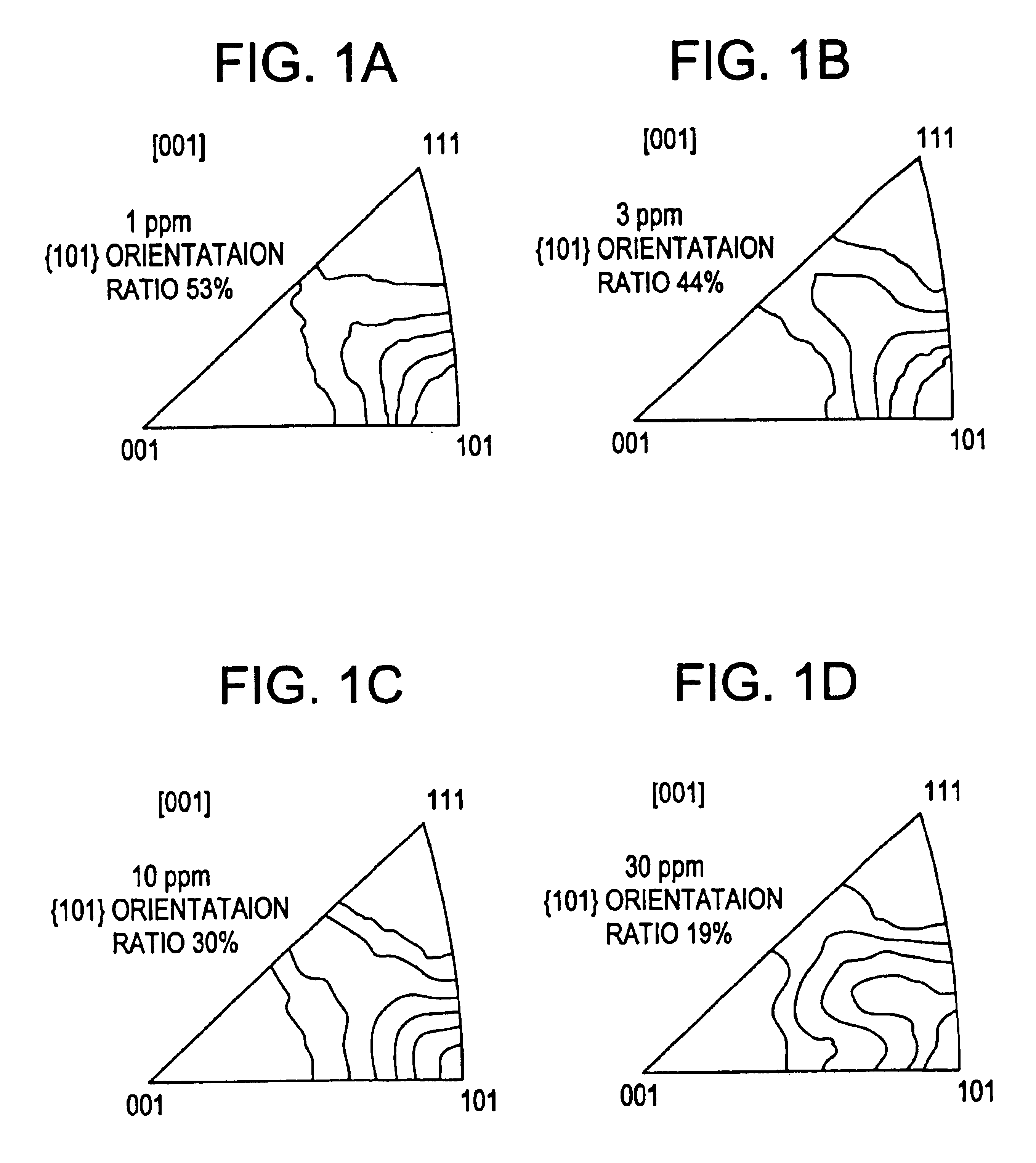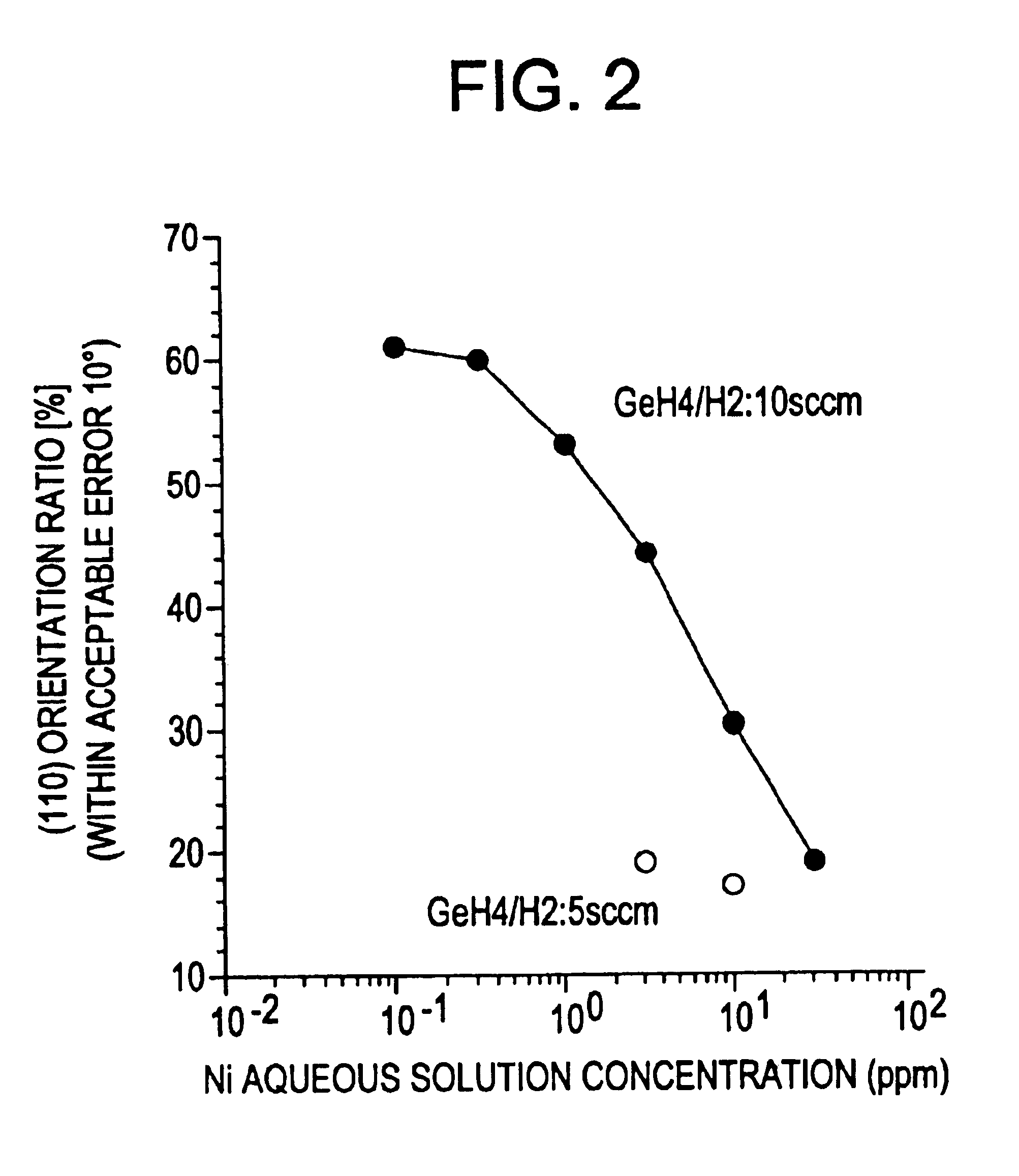Semiconductor device
a semiconductor and film technology, applied in the field of semiconductor devices, can solve the problems of increasing energy consumption in the manufacturing process, difficult to say the method, and long treatment time in the proper method, and achieve the effect of improving the orientation of the crystalline semiconductor film
- Summary
- Abstract
- Description
- Claims
- Application Information
AI Technical Summary
Benefits of technology
Problems solved by technology
Method used
Image
Examples
embodiment mode 1
[0152]The method of manufacturing a crystalline semiconductor film in accordance with illustration of FIGS. 1A to 11D is to crystallize an amorphous silicon film containing germanium by doping the entire surface of the amorphous silicon film with a metal element for promoting crystallization of silicon. In FIG. 11A, a glass substrate, typically, the Corning #1773 glass substrate (product of Corning Incorporated), is used for a substrate 201. On the surface of the substrate 201, a silicon oxynitride film is formed as a blocking layer 202 from SiH4 and N2O by plasma CVD to a thickness of 100 nm. The blocking layer 202 is provided to prevent an alkaline metal contained in the substrate from diffusing into a semiconductor film to be formed on the blocking layer.
[0153]An amorphous silicon film 203 containing germanium is formed by plasma CVD. SiH4 gas and GeH4 gas which is diluted by H2 to 10% is introduced in a reaction chamber and decomposed by glow discharge to be deposited on the sub...
embodiment mode 2
[0157]A method of selectively introducing a metal element for promoting crystallization of an amorphous semiconductor film will be described with reference to FIGS. 12A to 12C. In FIG. 12A, a substrate 220 may be the aforementioned glass substrate or a quartz substrate. When the glass substrate is employed, a blocking layer is formed as in Embodiment Mode 1.
[0158]An amorphous silicon film 221 containing germanium may be formed by plasma CVD as in Embodiment Mode 1, or by introducing germanium through ion implantation or ion doping. The film may also be formed by low pressure CVD in which Si2H6 and GeH4 are decomposed at a temperature of 450 to 500° C.
[0159]A silicon oxide film 222 with a thickness of 150 nm is formed on the amorphous silicon film 221 containing germanium. The method of forming the silicon oxide film is not limited. For example, the film is formed through discharge in which a mixture of tetraethyl ortho silicate (TEOS) and O2 is used, and the reaction pressure is set...
embodiment mode 3
[0162]The crystalline silicon film formed in accordance with the method described in Embodiment Mode 1 or 2 still has the metal element that has been utilized in crystallization. Although not distributed in the film uniformly, the metal element remains in a concentration over 1×1019 atoms / cm3 on the average. The film in this state can be used for a channel formation region of a TFT and other various semiconductor devices, of course, but it is preferred to remove the metal element from the film by gettering.
[0163]An example of the gettering method according to this embodiment mode will be described with reference to FIGS. 13A to 13C. In FIG. 13A, the glass substrate of Embodiment Mode 1 or a quartz substrate is employed as a substrate 230. When the glass substrate is used, a blocking layer is formed similar to Embodiment Mode 1. A crystalline silicon film 231 can be formed by the method described in Embodiment Mode 1 or the method described in Embodiment Mode 2. On the surface of the...
PUM
| Property | Measurement | Unit |
|---|---|---|
| angle | aaaaa | aaaaa |
| temperature | aaaaa | aaaaa |
| angle | aaaaa | aaaaa |
Abstract
Description
Claims
Application Information
 Login to View More
Login to View More - R&D
- Intellectual Property
- Life Sciences
- Materials
- Tech Scout
- Unparalleled Data Quality
- Higher Quality Content
- 60% Fewer Hallucinations
Browse by: Latest US Patents, China's latest patents, Technical Efficacy Thesaurus, Application Domain, Technology Topic, Popular Technical Reports.
© 2025 PatSnap. All rights reserved.Legal|Privacy policy|Modern Slavery Act Transparency Statement|Sitemap|About US| Contact US: help@patsnap.com



